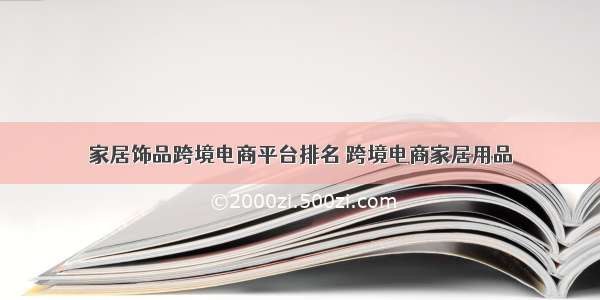
一、跨境电商建材的定义:
跨境电商建材是指在国际贸易条件下,在网上开展企业和消费者之间的进口贸易,企业利用国外互联网平台,以进口国家建材行业市场为抓手,向进口国家市场供应材料。
二、跨境电商建材带来的好处:
1.可以扩大进口国家建材行业市场,促进国际贸易活跃,增强市场竞争力。
2.提高了进口国家的生产和提供力度,以及供应商的服务水平,从而将消费者的服务口径缩小。
3.降低建材价格,节省消费者的费用,减少环境污染,同时可以减排温室气体排放。
4.跨境电商建材利于建材供应商通过新型销售和广告模式来维持或改善营销,有效提高企业的销售效率,同时也有利于提高消费者的购买欲望,增加消费。
三、跨境电商建材的局限性:
1.在跨境电商建材行业中,存在着企业竞争力不足,供需矛盾更加突出的情况,尤其是在销售模式、质量和物流方面缺乏明显的竞争优势。
2.由于进口建材中存在质量风险,货物和服务缺乏有效的监管,因此需要建材供应商建立完善的质量控制体系,保证质量。
3.建材供应商在跨境电商中还存在着物流困境,缺少廉价安全有效的供应链物流通道,特别是对远距离市场更加突出。
四、跨境电商建材未来发展趋势:
1.不断扩大进口建材产品的种类:加强建材供应商的产品开发能力,扩大进口建材的种类,提高品牌价值,吸引更多的消费者。
2.完善法规监管保障:建立针对进口建材的标准化规则,确保质量和服务的可靠性,确保消费者权益的有效保障,满足消费者对进口建材的全方位安全需求。
3.发展环保建材:引导企业集中研发清洁环保建材产品,为未来可持续发展奠定基础,以构建理多部门、多元文化的绿色发展路线。
1. Cross-Border E-commerce of Building Materials: Cross-border e-commerce (CBEC) is the process of selling goods or services to customers across different geographical borders. It is an increasingly popular form of doing business as it is highly efficient and provides customers with access to goods and services that may not be available in their local market. Building materials are one sector in which cross-border e-commerce is having an increasing impact as entrepreneurs and businesses look to access materials from different parts of the world.
2. Advantages of Cross-Border E-commerce for Building Materials: CBEC for building materials offers a number of advantages for buyers and sellers alike, including lower transaction costs and increased product choice. Buyers benefit from being able to access a wide variety of materials, often with better quality and at a lower price than would be available locally. Sellers have access to larger and more profitable markets, as well as the potential to benefit from different laws and regulations in different countries.
3. Challenges of Cross-Border E-commerce for Building Materials: Despite the advantages of cross-border e-commerce for building materials, there are also a number of challenges that need to be addressed. One of the most significant is the need to ensure regulatory compliance, as different countries have different rules and requirements. A second important challenge is the need to address logistics issues, as different countries may have different taxation and delivery requirements. Finally, the currency risks associated with international transactions must also be addressed.
4. Emerging Trends in Cross-Border E-commerce of Building Materials: Over the past few years, a number of technologically enabled trends and innovations have emerged to facilitate cross-border e-commerce for building materials. These include the use of 3D printing, blockchain technology, and Smart Contracts, which enable buyers and sellers to take advantage of complex international trade agreements. In addition, artificial intelligence and machine learning are also being used to streamline the process of ordering, payment, and delivery.
5. Conclusion: Cross-border e-commerce of building materials offers a number of advantages to buyers and sellers alike. Although there are a number of challenges that must be addressed, these are increasingly being addressed through innovative solutions and the use of new technologies. As such, it is likely that the use of cross-border e-commerce of building materials is set to continue to increase over the coming years.
















